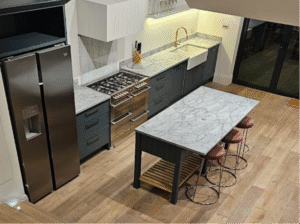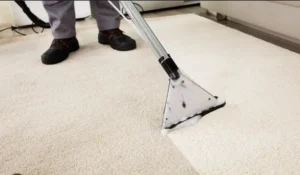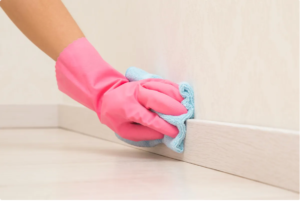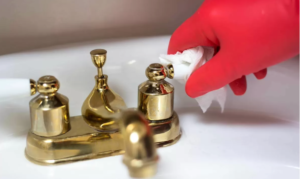
Understanding the Price of End-of-Tenancy Cleaning in London
Understanding the Price of End of Tenancy Cleaning in London Moving out of a rented property in London comes with a host of responsibilities, and one of the most crucial is End of Tenancy cleaning. Whether you’re a tenant wanting your full deposit back, or a landlord preparing the property for new renters, professional cleaning is often a must. But how much does it cost in London? Do I have to pay for an End of Tenancy Clean? Technically, a tenant’s responsibility is to leave the property in the same condition it was found, less fair wear and tear. Hence, there is no formal requirement to pay for a professional cleaning service. That being said, there are times when leaving the property in the same condition requires the use of professional equipment and expertise that most tenants won’t have. For example, if the carpets were professionally cleaned via Hot Water Extraction before their arrival. Then, unless the tenant happens to have and know how to use a professional Hot Water Extraction machine, then they are going to have to pay for someone to do it. More crucially, are the vigorous cleanliness standards that are difficult to meet without the appropriate experience and equipment. At times, an End of Tenancy Clean is possible to DIY, but it will take significantly longer than customers expect. If the clean is not completed to the cleanliness standards and requirements, then your landlord will likely hire a premium, next-day cleaning service, which will be very expensive (2-3X more than the normal rates), that will be deducted from your deposit. Average Costs So, if you have decided that it is a good idea to hire a professional End of Tenancy cleaning provider, then how much should you pay? The price of end of tenancy cleaning in London can vary significantly based on the size of the property, its condition, the quality of cleaning provider and the specific services required. Here’s a rough breakdown of what you can expect to pay. Note, these are approximations without extras such as carpet cleaning, upholstery cleaning and curtain cleaning. Property Size Estimated Cost Range Studio Flat £125 – £205 1-Bedroom Flat £185 – £225 2-Bedroom Flat/House £225 – £285 3-Bedroom Flat/House £190 – £280 4-Bedroom House or Larger £325– £500+ Factors That Influence Price Size and Layout of the PropertyNaturally, a larger home will require more time and effort to clean. More bedrooms, bathrooms, and living areas mean a higher cost. Condition of the PropertyIf the property is particularly dirty or has not been regularly maintained, expect to pay more for the extra labour and materials needed. Extra ServicesSome services aren’t always included in the standard price. These can add to your total: Carpet cleaning: £40–£70 per room Upholstery cleaning: £25–£125 per item Wall spot cleaning: additional £20–£50 Balcony/patio cleaning: varies depending on size Furnished vs UnfurnishedFurnished properties usually require more time and resources to clean due to the extra furniture/belongings that are in the property. Location Within LondonCentral London properties often come with a higher price tag due to traffic (increased travel time), congestion charges, and general cost of living. What’s Typically Included A reputable cleaning company in London will offer a comprehensive checklist to meet inventory standards, including: Thorough cleaning of all rooms Oven and hob cleaning Inside cupboards and appliances Limescale removal in bathrooms Vacuuming and mopping all floors Cleaning light switches, plugs, and skirting boards Dusting and wiping surfaces Interior windows Make sure to ask for the full checklist in advance and confirm that it aligns with your landlord’s or letting agent’s expectations. Please see what is included in our End of Tenancy cleaning list. Value for Money Though it may seem like a big upfront cost, end of tenancy cleaning is an investment. A professional clean: Increases your chances of getting your full deposit returned Ensures the property meets letting standards Saves you time, effort, and stress during your move In many cases, the cost of a professional clean is less than the potential deductions a landlord might make for insufficient cleaning. How to Get the Best Price Compare quotes from several reputable cleaning companies. Check reviews to ensure quality and reliability. Ask about guarantees – some companies will offer a re-clean, free of charge if the landlord or agent isn’t satisfied. Scrubs Cleaning offers a 7-day guarantee to all our clients. WARNING: Not all Cleaning Companies are created equal Unfortunately, due to the unregulated nature of the residential cleaning industry, there are many cowboys and phonies that you need to watch out for. They will charge End of Tenancy Cleaning prices but NOT clean to the required cleanliness standards. Then, when the check-out inspection fails, they will find a reason not to return and go over the missed areas. Hence, your landlord will deduct the cost of premium, next-day End of Tenancy Cleaning service ASWELL! To avoid this, check reviews! Give them a read to make sure they look legitimate. Then, we would recommend at least 100+ reviews with nothing less than a 4.8/5 average score. In terms of the review platforms, the best for service-businesses are Google and Trustpilot. Final Thoughts End of tenancy cleaning in London is a service that varies in cost, but it’s also one where you often get what you pay for. Cutting corners could risk losing a portion, or all, of your rental deposit. By choosing an experienced, transparent, and fairly-priced cleaning provider, you can move out with peace of mind. Feel free to contact Scrubs Cleaning if you need any advice or support regarding an upcoming End of Tenancy clean.










